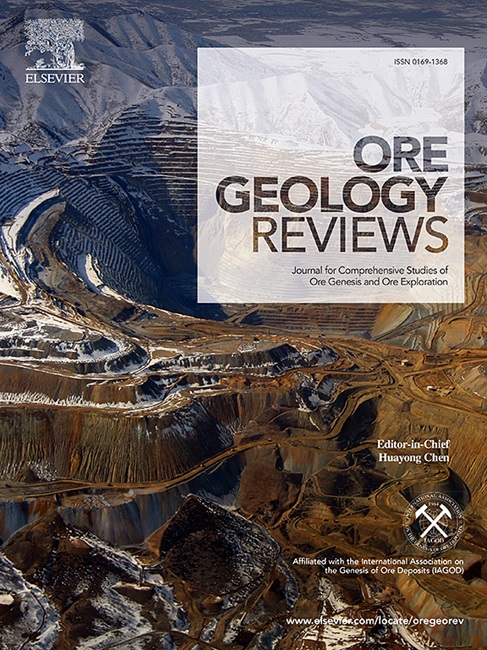Joint extraction method for entity relations from mineral resources reports integrating dependency parsing and improved graph convolutional networks
IF 3.2
2区 地球科学
Q1 GEOLOGY
引用次数: 0
Abstract
Geological reports, as crucial technical documents reflecting the outcomes of geological survey work, encapsulate extensive expert and domain knowledge. Geological knowledge graphs integrate vast amounts of data, facilitating efficient and rapid extraction of knowledge embedded within geoscientific data. The extraction of geological entity relations is a key method in creating these knowledge graphs. Existing techniques for extracting geological entities and their relations encounter difficulties such entity overlap, relation overlap, and the challenge of obtaining deep semantic information because of the vastness and complexity of geological data. Our study suggests a collaborative extraction model for entity relations that integrates dependency syntactic relations with a graph convolutional network (GCN) in order to address these problems. This model learns dependency syntactic structures and deep semantic information by building a GCN that includes dependency syntactic relations. A pointer network decoder is then added to increase entity relation extraction efficiency. Dependencies between words in a phrase, such as subject-verb and verb-object relations, are revealed via dependency syntactic analysis. By structuring these dependencies into a graph, the model captures syntactic structural information. Through operations involving adjacency matrices and feature matrices, the model effectively propagates and aggregates node information, thereby capturing the global dependency syntactic structure and deep semantic information of sentences. The integration of dependency syntactic relations with GCN processing enables the model to more accurately comprehend entity relations within sentences. Results from experiments show that this model successfully tackles problems like overlapping entity relations and the challenge of gleaning deep semantic information from geological texts. It achieves a 79.73% accuracy rate and a 77.98% F1 score on geological text datasets.

结合依赖关系分析和改进图卷积网络的矿产资源报告实体关系联合提取方法
地质报告是反映地质调查工作成果的重要技术文件,包含了广泛的专家知识和领域知识。地质知识图集成了大量的数据,便于高效、快速地提取嵌入在地球科学数据中的知识。地质实体关系的提取是构建这些知识图谱的关键方法。由于地质数据的庞大和复杂,现有的地质实体及其关系提取技术存在实体重叠、关系重叠以及获取深层语义信息等困难。我们的研究提出了一种实体关系的协作提取模型,该模型将依赖句法关系与图卷积网络(GCN)集成在一起,以解决这些问题。该模型通过构建包含依赖句法关系的GCN来学习依赖句法结构和深层语义信息。然后增加一个指针网络解码器,以提高实体关系提取效率。短语中词之间的依存关系,如主谓关系、动宾关系等,是通过依存句法分析来揭示的。通过将这些依赖关系构建成一个图,模型捕获语法结构信息。该模型通过涉及邻接矩阵和特征矩阵的运算,有效地传播和聚合节点信息,从而捕获句子的全局依赖句法结构和深层语义信息。依赖句法关系与GCN处理的集成使模型能够更准确地理解句子内的实体关系。实验结果表明,该模型成功地解决了实体关系重叠和地质文本深层语义信息收集等问题。该方法在地质文本数据集上的准确率为79.73%,F1分数为77.98%。
本文章由计算机程序翻译,如有差异,请以英文原文为准。
求助全文
约1分钟内获得全文
求助全文
来源期刊

Ore Geology Reviews
地学-地质学
CiteScore
6.50
自引率
27.30%
发文量
546
审稿时长
22.9 weeks
期刊介绍:
Ore Geology Reviews aims to familiarize all earth scientists with recent advances in a number of interconnected disciplines related to the study of, and search for, ore deposits. The reviews range from brief to longer contributions, but the journal preferentially publishes manuscripts that fill the niche between the commonly shorter journal articles and the comprehensive book coverages, and thus has a special appeal to many authors and readers.
 求助内容:
求助内容: 应助结果提醒方式:
应助结果提醒方式:


